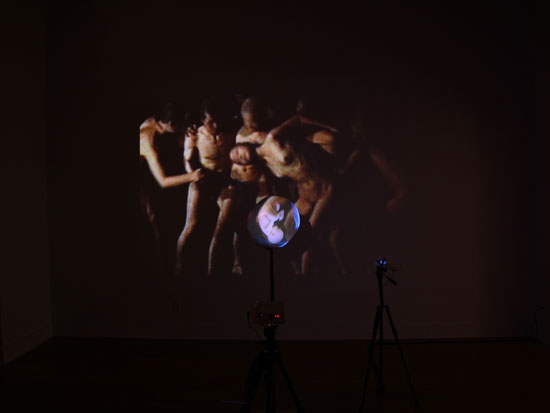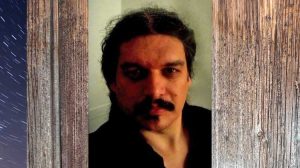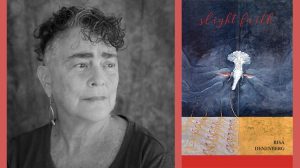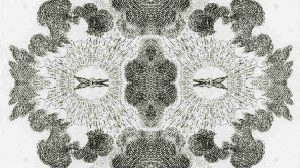Yongshin Cho is a media artist who has been working in Paris and Seoul. After receiving his BA in painting from Hongik University, Seoul, in 1985, Mr. Cho went on to earn his BA and Master of Fine Arts degree from Université Paris-VIII in 1991 and 1997 respectively. In 1995, Cho was invited as one of the seven media artists, together with Nam June Paik and Bill Viola, to the 15th International Video and Multimedia Art Festival Video-Formes 1995 at Clermont-Ferrand. After he watched Cho’s work at Clermont- Ferrand, video columnist of Le Monde/Art Press Jean-Paul Fargier reviewed his work in the art magazines Turbulences Vidéo and Art Press. He became widely known in the French video art world because of the influence of these reviews.
Later, while living in Paris, he taught video art at Foundation Danae. In 1997, he was invited to the group exhibition Everything Against Art, which was hosted by Pompidou Centre. In 1997, he was selected as a gallery artist by Galerie Les Fille Calvaire in Paris and had a solo exhibition Time Cube, which included a 3D video installation using shutter glasses, with a theme of an individual’s conflict with society. In 1997, Cho was selected by Samsung Foundation of Culture as a resident artist in Paris, and he worked there for three years under the sponsorship of the organization.

He was also sponsored by WIFCO Corporation to use its special device called the whole body scanner. With this sponsorship, he created hyper-realistic body images, which could be used in interactive game characters. Based on these experimental efforts, Mr. Cho showed an interactive three-dimensional video installation entitled Floating Body in a Media Entertainment booth at Media City Seoul 2000, which was held in Seoul in September 2000, and attracted many art critics with its virtual realistic effects. In 2010, a media performance Metamorphosis was erected at the international competition exhibition for an opening ceremony at the Asian Culture Hall. This presentation consisted of a twenty-minute media performance which incorporated laser cube and choreography and was well received. In the same year, Mr. Cho formed a media art group called Solar Eclipse and started to bring new vitality to contemporary art in Gwangju.
Mr. Cho has become a skillful and influential artist, especially with the combination of 10 Korean artists and 3-4 foreign artists who use media technology. While leading Solar Eclipse, Mr. Cho has made numerous public performances in order to encourage the participation and interest of all citizens through video, installation, laser, and sound performance. Now he focuses on incorporating virtual reality into his works.
Bill Wolak: How old were you when you began painting?
Yongshin Cho: I began painting when I entered elementary school. I was seven years old. In May of the same year, an art contest was held in my school in which all the students participated. I remember I drew a distant mountain and sun against a blue sky, and I was so excited to draw the sun with a red crayon that I made a hole in the sun. I also liked to draw from comics; I remember I drew a witch from a horror comic called A Summer House at 12 Midnight and guns and cars in my textbook after I read a spy comic.
BW: Who were the first artists that interested you?
YC: I adored Leonardo da Vinci after I saw Mona Lisa when I was a 4th grader. I also liked the strong impression of sunlight from impressionist paintings. I liked especially Claude Monet and Alfred Sisley.
BW: Were there any specific artists who had an early influence on you?
YC: Leonardo da Vinci had an early influence on me. When I first saw da Vinci’s Virgin of the Rocks and Mona Lisa, I was attracted by his sfumato technique, which overlays translucent layers of color to create a smoky illusion. I liked the mysterious image and the way he juxtaposed the figure and landscape.
BW: Do you still paint?
YC: Yes, I do. I made up my mind to be a painter when I was in the 4th grade and have been painting since then, although my main focus has been a video art since I went to Paris in 1987.
BW: When did you begin to make the transition into becoming a video artist?
YC: It was in 1991 that I dedicated myself to video art and started presenting my video works to the public in 1992.
BW: What attracted you to begin constructing video installations?
YC: After finishing my college degree in 1985, I entered The University of Paris VIII in 1987. During the first year in Paris, I focused on drawing and painting human bodies, which I considered as being oppressed and tortured under the dictatorial government in Korea. However, I felt thirsty for some other media with which I could express something more. While exploring some media which could appeal to the audience more immediately, I thought of video. Since then, I have been focusing on video installations in which human bodies are subjects.
BW: Were there any video artists whose work you admired and who might have had an influence on you?
YC: Nam June Paik and Bill Viola had been source of my artistic inspiration when I started video work. I was impressed by Paik’s works which sought subversion of customs with an innovative artistic method while exploring challenging creativity and humanism. Viola’s visual art works were also inspiring in the way he treated the life and death of human beings.
BW: Tell me about the kind of artistic work that you did while you were living in Paris.
YC: When I first arrived in Paris, I was thrilled by the fact that I was breathing the air of the street where the French Revolution overthrew the monarchy. At that time, I was focusing on drawing and painting human bodies which symbolized the sufferings of the Korean people and the oppression under the dictatorship in Korea. The new environment made me explore new media, like using TV monitors. At that time, I was interested in how manipulated news or information aired on TV could minimize or paralyze the judgement of the public. I began to use TV monitors as the main media for my works to reveal the phenomenon. Later, beyond TV monitors, I adopted projectors for a larger screen in depicting conflicts, divisions, and contradictions of the society and incorporated installations and performance in my works.
BW: Where in South Korea do you live now?
YC: I live in Seoul now. I plan to live and work in New York City in the coming years.
BW: The human body plays a central role in your installations. Can you comment on the importance of nakedness in your work?
YC: Nakedness has two meanings in my work. First, nakedness is a symbol of human beings as a subject suffering conflicts and schizophrenia in the process of struggling for survival; the other is a symbol of conflicts between instinctive desire and restrictions imposed by social structures. Human beings instinctively pursue what is good to be happy, for example, freedom, justice, and equality. However, the social structure we are living in is not constructed in a way for those uplifting things to prevail. This gap between human desire and social structure causes conflicts and schizophrenia.

BW: In your piece Adrift, you juxtapose a naked woman’s torso with the ocean’s breaking waves. What does this juxtaposition mean?
YC: Breaking waves are very beautiful. A naked woman’s torso drifting over the breaking waves is beautiful. By juxtaposing these two beautiful images, I wanted to show what is possible on the other side of the beautiful. Here breaking waves symbolize the environment human beings are living in; they experience oppression and conflicts caused by the social structure. A naked woman’s torso symbolizes the desire of human beings—physical and psychological desire. Life itself is a continuous process of confronting the social restrictions while overcoming intrinsic human limitations in order to fulfill one’s desires. Desires drift broken and fragmented in the face of restrictions and limitations.

BW: Your installation The Song of the Mandrake is very complex. Can you describe it and comment on what you intended with that piece?
YC: This video installation was inspired by “Twickenham Garden”, the poem by John Donne, the most outstanding of the English metaphysical poets. The mandrake plant—which is a plant with thick roots, often forked, and thought to resemble male or female genitals, or the legs of a human being—was employed to symbolize a curse afflicting the fate and desire of a human being in the poem.
Through the symbol of the mandrake, I conjectured that the existence of some sort of injury was unavoidable in the life journey of any human being. Human beings are born to meet their fate; therefore, lots of miseries and sufferings oppress human beings through their lives. Such challenges are inevitable. I used the mandrake to symbolize these human difficulties.
The Song of the Mandrake employed three overlapping structures: a large screen on which a human body of personified mandrake and sky are projected; a clock tower, installed three to four meters front of the screen on which two hands of the mandrake are projected; and the hill of artificial flowers covering the floor from the wall to the clock tower.
On the screen on the front wall of the exhibition room is projected an open sky spreading above a low hill. Clouds are floating in the sky, and a human body appears and drifts among those clouds as if it were streaming in the clouds. These images are accompanied by the background audio of deep sighs. The image on the screen is comprised of consecutively videotaped sky from dawn to sunset to glowing night. This image changes speeds and shows the flow of time and repeated formation and extinction of an existence as the sound of a whispering wind quietly moans in the background.
In front of the projections, the clock tower stands casting its shadow on the screen. On it, the two hands of the mandrake are projected. Those two hands continue to search for something among fallen leaves making a crisp sound. Unlike the quick changes of the image on the rear screen, the slow movement of the hands on the clock tower seems to evoke those times gone by.
The hill of artificial flowers on the floor of the exhibition room reflecting the eerie black light represents desire and the unconscious world.

BW: The Crowd is perhaps your most ambitious work. Please describe how you went about making it and the multiple layers of meaning you have constructed in this piece.
YC: The Crowd was inspired by my experience of the demonstration of May 1987, which led to the June 29 Declaration in Korea. Korean citizens held a public demonstration against the incumbent authoritarian regime of Chun Doo-hwan, who had been repressing democracy. They asked for direct election of the president, amnesty of political prisoners, protection of human dignity, the right of habeas corpus, and freedom of speech. The role of the June 29 Declaration is very important in the history of Korean democratization. Witnessing the demonstration as one of the demonstrators, I felt a great power of moving history in the crowd. The Crowd is about this power. I wanted to show the strong energy of individuals as the phenomenon of a crowd.





Leave a Reply